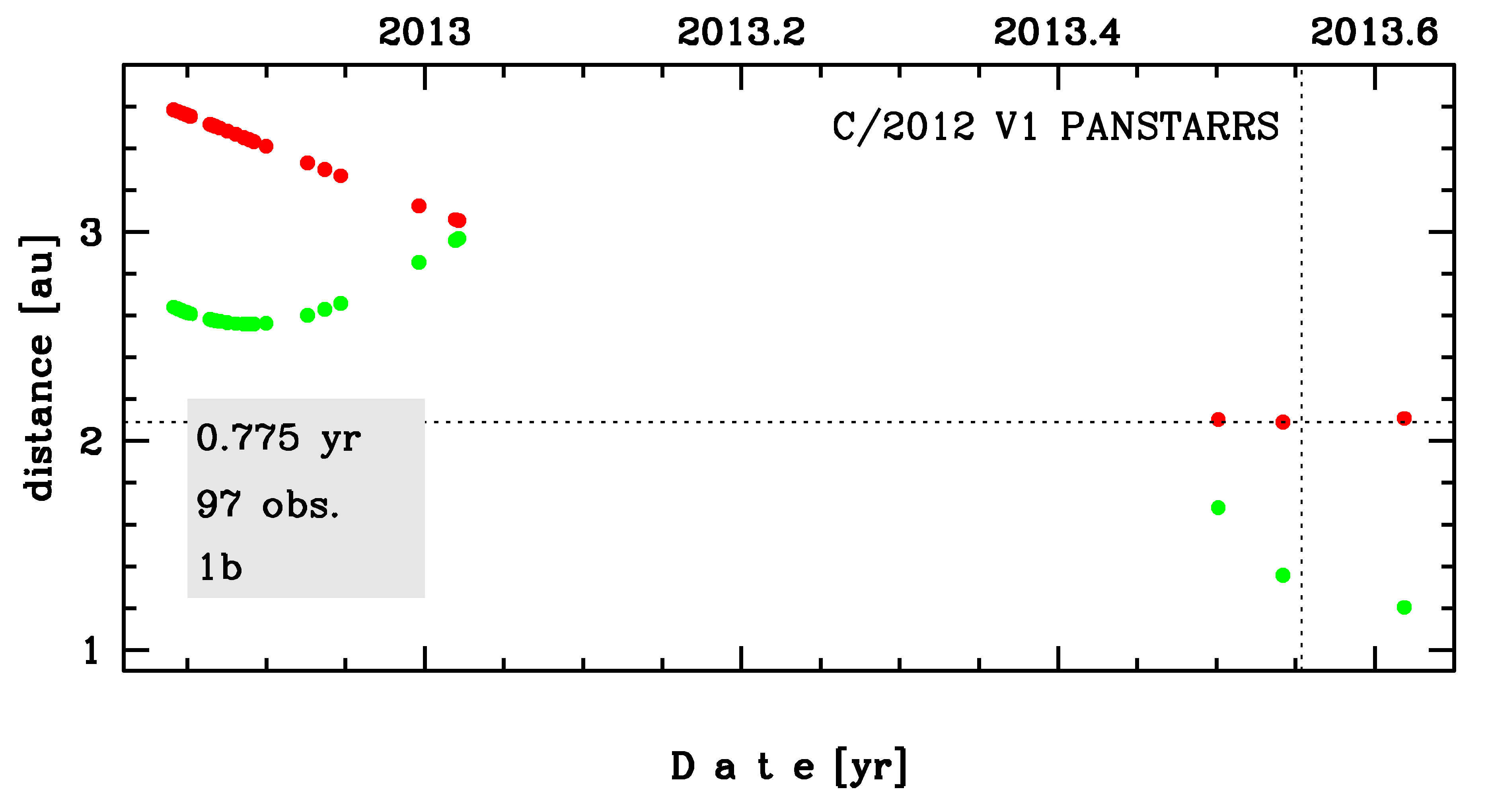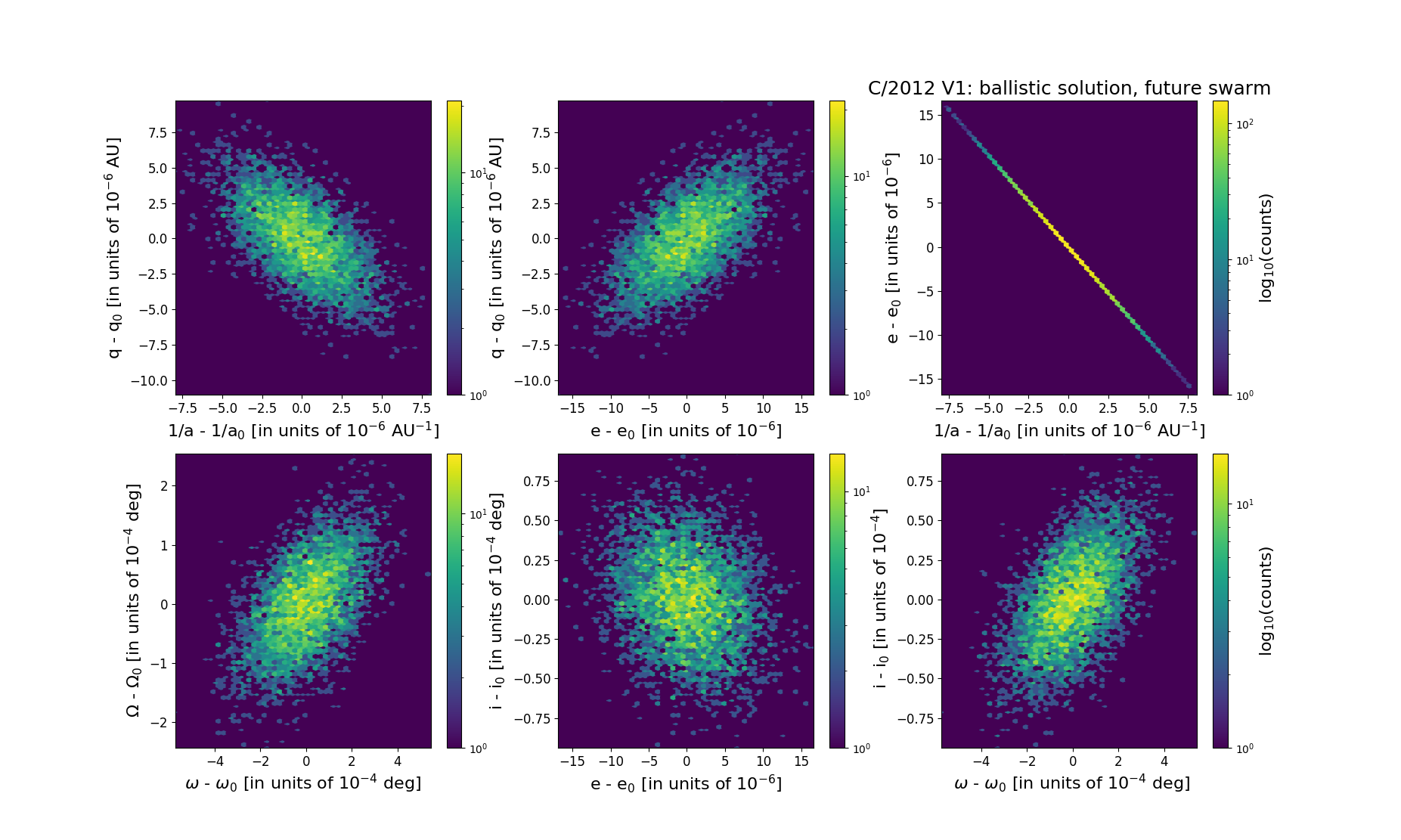C/2012 V1 PANSTARRS
more info
Comet C/2012 V1 was discovered on 3 November 2012 with Pan-STARRS 1 telescope (Haleakala), that is almost 9 months before its perihelion passage. It was observed until 13 August 2013 (see picture).
C/2012 V1 had its closest approach to the Earth on 5 August 2013 (1.163 au), about 2 weeks after its perihelion passage.
Solution given here is based on data spanning over 0.775 yr in a range of heliocentric distances: 3.58 au – 2.09 au (perihelion) – 2.11 au.
This probably Oort spike comet (slightly negative original 1/a) suffers moderate planetary perturbations during its passage through the planetary system that cause a tighter future orbit with a semimajor axis of about 1,300 au (see future barycentric orbits).
See also Królikowska 2020.
C/2012 V1 had its closest approach to the Earth on 5 August 2013 (1.163 au), about 2 weeks after its perihelion passage.
Solution given here is based on data spanning over 0.775 yr in a range of heliocentric distances: 3.58 au – 2.09 au (perihelion) – 2.11 au.
This probably Oort spike comet (slightly negative original 1/a) suffers moderate planetary perturbations during its passage through the planetary system that cause a tighter future orbit with a semimajor axis of about 1,300 au (see future barycentric orbits).
See also Królikowska 2020.
| solution description | ||
|---|---|---|
| number of observations | 97 | |
| data interval | 2012 11 03 – 2013 08 13 | |
| data type | significantly more measurements before perihelion (PRE+) | |
| data arc selection | entire data set (STD) | |
| range of heliocentric distances | 3.58 au – 2.09 au (perihelion) – 2.11 au | |
| detectability of NG effects in the comet's motion | NG effects not determinable | |
| type of model of motion | GR - gravitational orbit | |
| data weighting | YES | |
| number of residuals | 177 | |
| RMS [arcseconds] | 0.36 | |
| orbit quality class | 1b | |
| orbital elements (barycentric ecliptic J2000) | ||
|---|---|---|
| Epoch | 2323 02 13 | |
| perihelion date | 2013 07 21.23322681 | ± 0.00026059 |
| perihelion distance [au] | 2.09066356 | ± 0.00000253 |
| eccentricity | 0.99835273 | ± 0.00000479 |
| argument of perihelion [°] | 123.373344 | ± 0.000138 |
| ascending node [°] | 85.498123 | ± 0.000070 |
| inclination [°] | 157.843361 | ± 0.000028 |
| reciprocal semi-major axis [10-6 au-1] | 787.92 | ± 2.29 |
| file containing 5001 VCs swarm |
|---|
| 2012v1a5.bpl |

